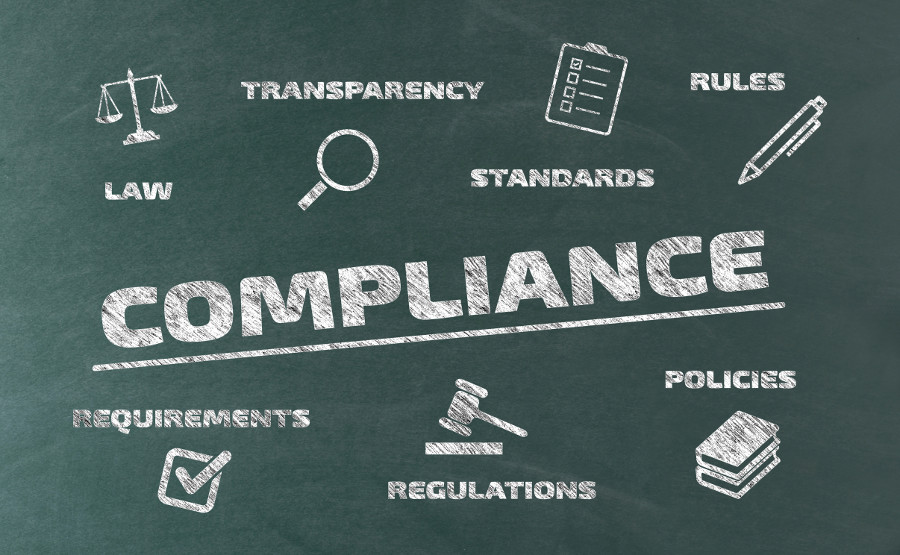Most people entering a building don’t think about the laws that govern the structure they’re currently standing in. But perhaps you should – real estate compliance encompasses the sets of regulations that govern properties and their components, and regulations are increasing every year. Staying on top of those regulations is key to managing a successful real estate portfolio with assets in different locations.
Dealing with different addresses means dealing with vastly different rules

As opposed to FTC standards, which apply to US businesses at large, real estate compliance is defined by region and jurisdiction. Different municipalities enact rules for their district, defining what your property has to abide by in a specific city or state.
For example, in New York, a single building has to interact with and abide by several different regulatory agencies – an alphabet soup of acronyms – in order to maintain compliance. Failing to do so may impact the ability to obtain a Certificate of Occupancy, prevent ongoing transactions, and stall refinances. Compliance-related violations can result in adjudication, increased fines, or even Criminal Summonses.
Of course, the rules governing a New York City skyscraper may vary greatly from the ones applying to a similar tower in Denver. Having a diverse portfolio featuring properties around the country makes it necessary to understand complex requirements in multiple locations. Knowing which local agencies have jurisdiction over which parts of your buildings is critical to preventing excess fines and escalated violations.
When it comes to real estate compliance, size doesn’t matter

Real estate compliance can encompass every single square foot of a property: from elevators and boilers to fire suppression systems, and from facades to appurtenances, every feature or piece of equipment in a building can and will increase overall compliance risk.
Size doesn’t matter – while larger buildings tend to be more complex and invite additional scrutiny, smaller properties are increasingly facing the same intense regulations as their counterparts. Single family homes in Los Angeles are required to retrofit their properties for water conservation devices. Certain standards must be in place before the property can achieve a Certificate of Compliance and be sold, adding another requirement on the closing checklist.
Of course, larger buildings aren’t exempt from this wave of new regulations – per the LA times, LA also passed significant seismic safety legislation, mandating that over 15,000 properties in the city be retrofitted to strengthen themselves against earthquakes. This law followed similar requirements passed in smaller cities like Berkeley and Fremont.
Protecting your investment means understanding the regulatory landscape

Per PwC’s Emerging Trends in Real Estate study, real estate investment is expanding across various secondary markets in the United States. It’s no longer just about New York, Los Angeles, and Chicago – Austin, Seattle, San Diego, and San Antonio are among the top 20 markets for real estate investment and development named in the report. If you’re looking to invest, you have a wide net of growing cities to develop your real estate portfolio. With that expansion comes a number of diverse and complex real estate compliance regulations to navigate
Planning on doing any construction? Make sure you know what’s required, and more importantly, what happens if something goes wrong. Can you simply pay a fine to dismiss a ticket? Does the dismissal involve attending a hearing? Is proving correction outside of the hearing mandatory? Knowing the answer to these questions can prevent thousands of dollars (and in some cases, several thousands of dollars) in fines.
Real estate compliance transcends location, building size, and type – all structures, from commercial and residential to retail and institutional are affected. From coast to coast and the ground level up, real estate compliance regulations are on the rise and shows no signs of slowing. It’s critical now more than ever to not only understand the strength of an individual real estate market, but the rules and requirements that will significantly impact your assets going forward. Knowing the risks your property will face and the regulations you’ll have to abide by is both a prudent and necessary step to protecting and growing your investment.




